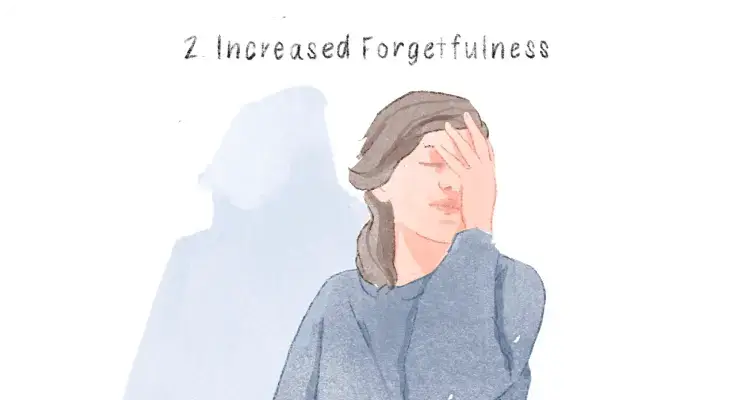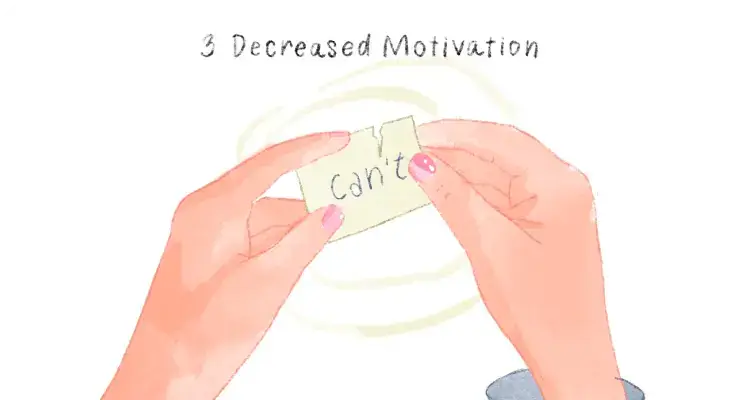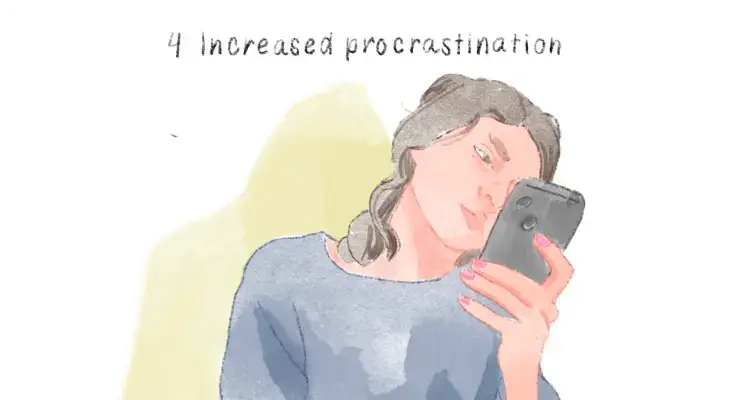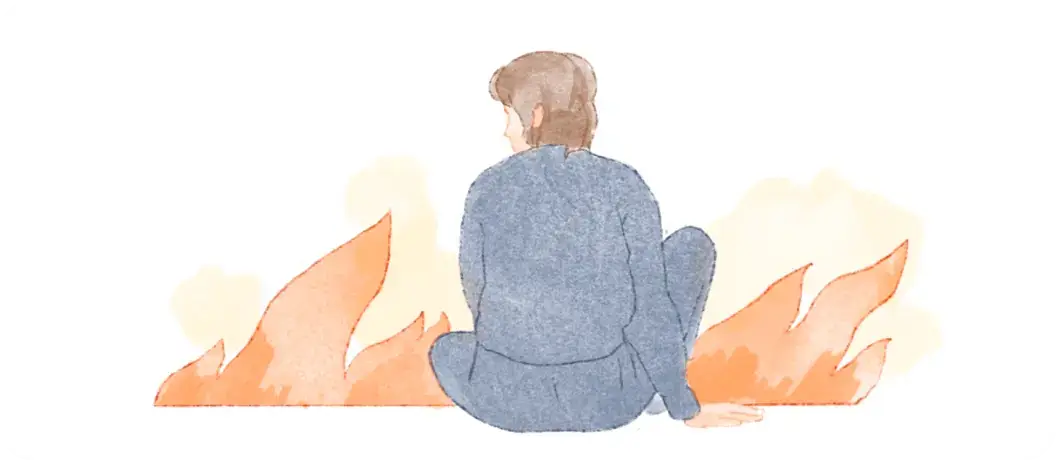For people with ADHD, burnout is not just something that happens to overworked office workers. Trying to stay focused, stay still, and keep up with our daily routines can be very tough and quickly lead to burnout.
Furthermore, social expectations and attempting to conform to neurotypical standards can add extra stress, making it even harder for ADHDers to handle things.
Overview
- Burnout is a state of chronic stress leading to physical, emotional, and mental exhaustion.
- The cycle of ADHD burnout involves phases of hyperactivity, inattentiveness, impulsivity, and depression.
- ADHD-related burnout is a long-term condition that lasts for at least three months and is marked by widespread fatigue, loss of function, and a decreased ability to handle stimuli.
- Common causes of ADHD burnout include overstimulation, executive function challenges, perfectionism, hyperfocus, hyperactivity, and lack of support.
Start by taking the test to see if you show signs of ADHD, and get a personal plan to start mitigating symptoms today.
6 symptoms that may hint at ADHD burnout
Recognizing the signs of burnout in ADHD is the first step in managing it. Here are some of the common symptoms to look out for:
1. Chronic Exhaustion
While everyone feels tired from time to time, those who have ADHD may experience burnout and a lack of energy that is not relieved by rest. It is one of the main physical symptoms of ADHD burnout. It’s kind of a persistent state of fatigue that can interfere with doing things every day.

2. Increased Forgetfulness
ADHD burnout often manifests as heightened forgetfulness and difficulty concentrating. Unfortunately, this can lead to increasing situations like mistakes at work, missed appointments, and a general mess in personal order.

3. Decreased Motivation
“Why am I so unmotivated?” you may ask. One of the most noticeable signs of burnout is a loss of satisfaction and pleasure from life’s usual activities. The same goes for ADHD burnout, too. This can manifest as decreased motivation, lack of drive, or disinterest in what was once engaging.

4. Increased procrastination
Procrastination has become your new best friend. If you can wait until tomorrow, why do something today? And then, like, it’s lasting weeks.
This procrastination avoidance coping strategy is especially common for ADHDers because it is a form of impulsivity, which is another symptom of ADHD.

5. Brain fog
Your ability to react suddenly gets slower. Remembering things, organizing your thoughts, and finding the right words to say what you want to say can get harder. You feel like there is a fog in your head.

6. Irritability and mood swings
Emotional signs of ADHD burnout also often include sudden anger, irritability, and mood changes. During times of depleted energy, even minor irritations can feel all-consuming.

What is the link between ADHD and burnout?
First, let us talk about what each word means. This will help us connect them.
Basically, burnout is a state of constant stress that makes you physically, emotionally, and mentally worn out.
ADHD, in turn, is a neurodevelopmental disorder with psychological aspects like impulsivity, difficulties in focusing, paying attention, and decision-making.
People with ADHD symptoms may experience extra severe burnout symptoms because their condition already affects their ability to handle stress and daily tasks.
According to a study done recently, people with ADHD are more likely to get burned out. Some ADHD symptoms, like not being able to organize things well and acting on impulses, may even make the problems caused by burnout worse.
How ADHD burnout may look
The constant need to apply intense focus to tasks, combined with the struggle to maintain structure and routine, drains energy at an alarming rate.
Here’s how burnout can look:
- You stop enjoying the activities you used to love.
- You start seeing your coworkers as enemies piling on more work.
- You pull back because it feels impossible to get anything done.
Typically, ADHD burnout is considered a part of the underwater section of the ADHD iceberg, often overlooked and underestimated.
You might know the feeling when you’ve got too many tabs open in your brain, and, with time, the whole system crashes because of intensity anyway? That’s ADHD burnout, and it’s more than just a “bad day.”
Also, ADHD may change the amount of dopamine. This is an important chemical that helps us stay motivated, feel good, feel safe, control our emotions, and think clearly. So when the level is low, we might feel tired, overwhelmed, and, in the end, burnt out.
How long does ADHD burnout last?
The symptoms of neurodivergent burnout, also known as ADHD burnout, include widespread, long-term (typically 3+ months) exhaustion, loss of function, and a decreased capacity to handle stimuli.
How does ADHD burnout cycle?
Burnout when having ADHD symptoms might also be cyclical. It swings back and forth between being too active and feeling desperate, between wanting to do everything and not being able to do anything.
It could appear thrilling at first, like you can do an endless number of things all at once. But eventually, you will reach a plateau or ADHD burnout. A mountain of unfinished work begins to rise. Even the most mundane tasks seem tough.
All actions are tinged with shame. The ADHD burnout cycle in brief. Let’s examine these cycle phases in detail.
1. The Hyperactive Phase
At this stage, a person with ADHD may take on too much because new projects give them excitement (actually a dopamine rush) and make them feel good for a short time. But then make them crash.
2. The Inattentive Phase
Here, you may attempt to keep the spinning plates in the air—in work, relationships, and obligations—are increasingly futile.
3. The Impulsive Phase
Impulsivity is one of the most common signs of ADHD. It can make you do things that are not good for you in the long run in order to get a quick fix of dopamine, which drains your resources and makes you more stressed. Since you were very excited and made a lot of promises earlier.
Dealing with too much at once or not paying attention can leave a lot of work undone and disappoint those around you. So you might start to feel shame for this.
4. The Depressed Phase
When all else fails, depression often sets in, marked by a loss of interest, feelings of inadequacy, and sometimes, total ADHD paralysis and burnout.
Does this ring a bell? It’s time to hit the brakes and figure out what the triggers are and what to do about them.
What may be the causes of ADHD burnout?
People with ADHD can better prepare themselves to recover from ADHD burnout if they understand what actually causes it. Here are some common causes:
1. Overstimulation
People with ADHD often feel everything around them more strongly, which can make them overly stimulated. This, in turn, puts the nervous system in a constant state of alertness, using up the body’s energy stores.
2. Executive function challenges
Executive functions are the skills needed to organize and act upon information (self-regulating, prioritizing, planning, decision-making, etc.).
ADHD’s impact on these functions can lead to feelings of being overwhelmed and an inability to manage daily tasks effectively.
This also makes it hard to guess how much time and work something will require, which makes it simple to take on too much by accident.
Also, ADHDers might have trouble setting limits. Some of us may find it hard to say “no” because we do not want to let people down or be rejected. This is called rejection-sensitive dysphoria.
More and more tasks can make us feel like we can not handle them all, which can lead to burnout.
3. Strive for perfection
People with ADHD often resort to perfectionism as a coping mechanism. Seeking perfection can make you more stressed and set standards that are too high and impossible to reach. Constantly trying to meet these standards but failing can cause ADHD burnout.
4. Hyperfocus and hyperactivity
People with ADHD are more likely to hyperfocus on one task for too long, especially if they are not taking adequate breaks or relaxing. This phenomenon is called ADHD hyperfixation. With time, it might transform into real burnout.
Hyperactivity is another core symptom of ADHD, characterized by restlessness and a constant need for movement. While it can be an asset in certain situations, it also makes it challenging to relax and unwind.
Constantly needing to be on the move prevents us from taking much-needed breaks to recharge, leading to mental and physical exhaustion.
5. Lack of support
Sometimes, it is even harder to deal with ADHD when people around you do not understand. That is where “ADHD masking” comes in handy. It means that we try to hide or play down our ADHD symptoms to fit in with society’s expectations. This pretending also drains a lot of mental energy and leaves you completely empty.
Some people with ADHD may feel alone and unable to ask for help if they do not have a network of people who can help them. It also has a great impact on burnout symptoms.
6. Work-related stress
Work-related stress is a common trigger for ADHD burnout. High-pressure environments, tight deadlines, and demanding tasks can quickly become overwhelming. Managing work-related stress is essential for maintaining a healthy work-life balance.
7. Lack of routine
A lack of routine can exacerbate ADHD symptoms, leading to increased chaos and stress. Without a clear structure, it can be challenging to stay organized and manage daily tasks, contributing to burnout.
8. Inconsistent sleep patterns
Sleep is fundamental to overall health, and inconsistent sleep patterns are a common issue for those with ADHD. Difficulty falling asleep, staying asleep, or maintaining a regular sleep schedule can all contribute to burnout.
Coping strategies that will help to get out of ADHD burnout
Thankfully, there are numerous strategies and techniques that can help prevent and recover ADHD burnout. Here are some practical methods to consider:
- Time Management Techniques: Employing effective time management techniques, like the Pomodoro method or bullet journaling, can help streamline tasks and reduce the overwhelm of a never-ending to-do list.
- Self-Care Practices: Engaging in regular self-care activities such as exercise, mindfulness, meditation, and hobbies can provide the necessary mental and physical rejuvenation to ward off ADHD burnout.
- Practice Self-Compassion: Be kind to yourself. Understand that ADHD is a part of who you are, and it’s okay to have limitations. Practicing self-compassion can go a long way in reducing the mental burden.
- Get enough sleep: Stick to a regular sleep schedule to avoid getting tired and having trouble thinking.
- Mindful Nutrition: Fuel your body with a balanced diet, minimizing caffeine and sugar, which can exacerbate ADHD symptoms.
- Celebrate Small Wins: Every small achievement is a step forward. Celebrate your progress, no matter how minor it may seem. This positive reinforcement can boost your motivation and morale.
- Understand Your Strengths: ADHD comes with its unique set of strengths, such as creativity, spontaneity, and resilience. Recognize and leverage these strengths to your advantage.
- Seeking Professional Help: Therapy, particularly Cognitive Behavioral Therapy (CBT), can be an invaluable resource for those with ADHD. It can help reframe thought processes and develop coping mechanisms to deal with burnout.
- Importance of a Strong Support Network: Educating close friends, family, and colleagues about ADHD goes a long way in fostering an environment of understanding and support.
ADHD burnout is not a life sentence. While the path to recovery is personal and non-linear, it is possible—through rest, recalibration, and a redefining of balance. For those grappling with ADHD burnout, take solace in the fact that in sharing your struggle, you lessen its weight.
Disclaimer
This article is for general informative and self-discovery purposes only. It should not replace expert guidance from professionals.
Any action you take in response to the information in this article, whether directly or indirectly, is solely your responsibility and is done at your own risk. Breeze content team and its mental health experts disclaim any liability, loss, or risk, personal, professional, or otherwise, which may result from the use and/or application of any content.
Always consult your doctor or other certified health practitioner with any medical questions or concerns
Breeze articles exclusively cite trusted sources, such as academic research institutions and medical associations, including research and studies from PubMed, ResearchGate, or similar databases. Examine our subject-matter editors and editorial process to see how we verify facts and maintain the accuracy, reliability, and trustworthiness of our material.
Was this article helpful?




